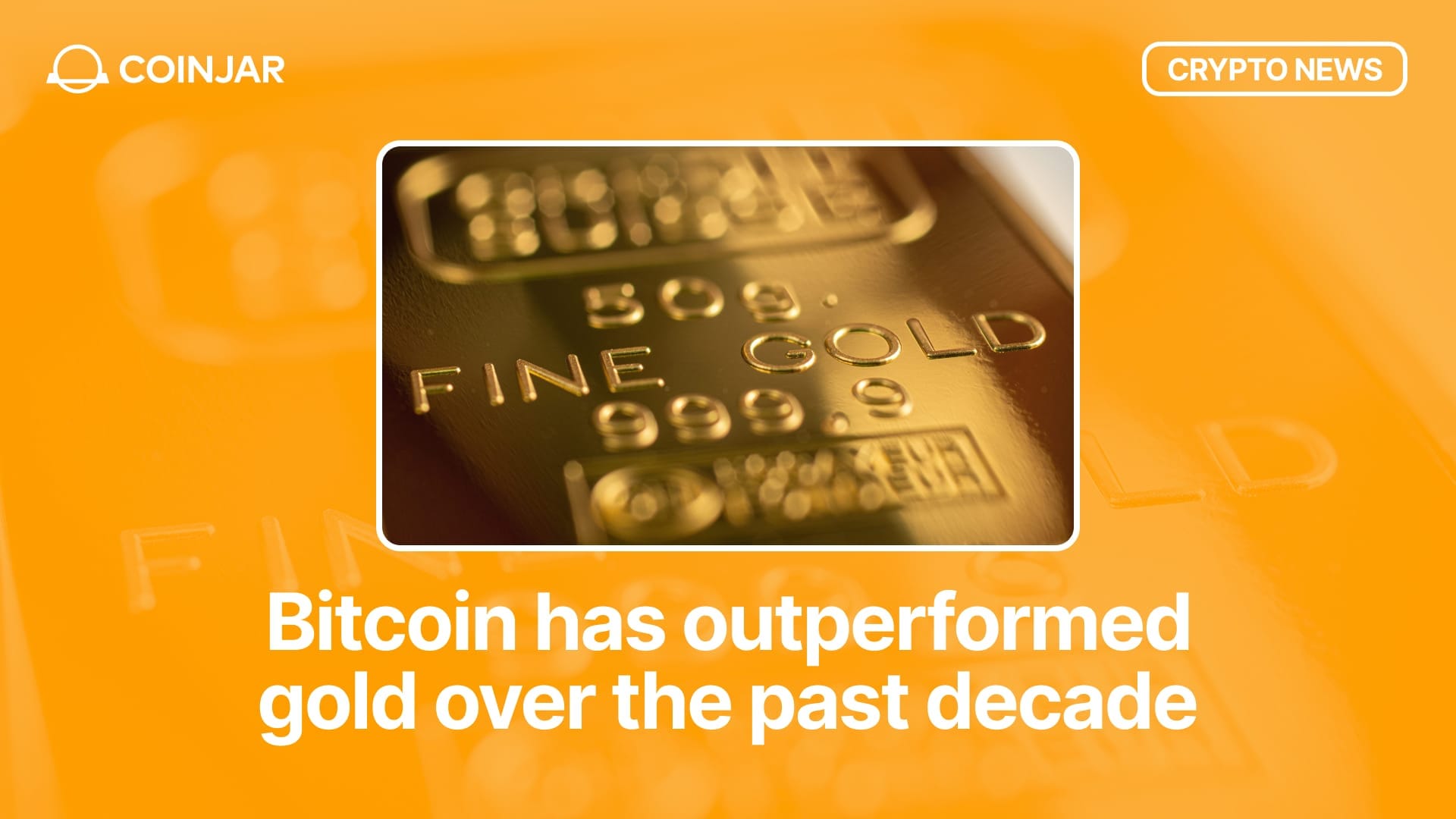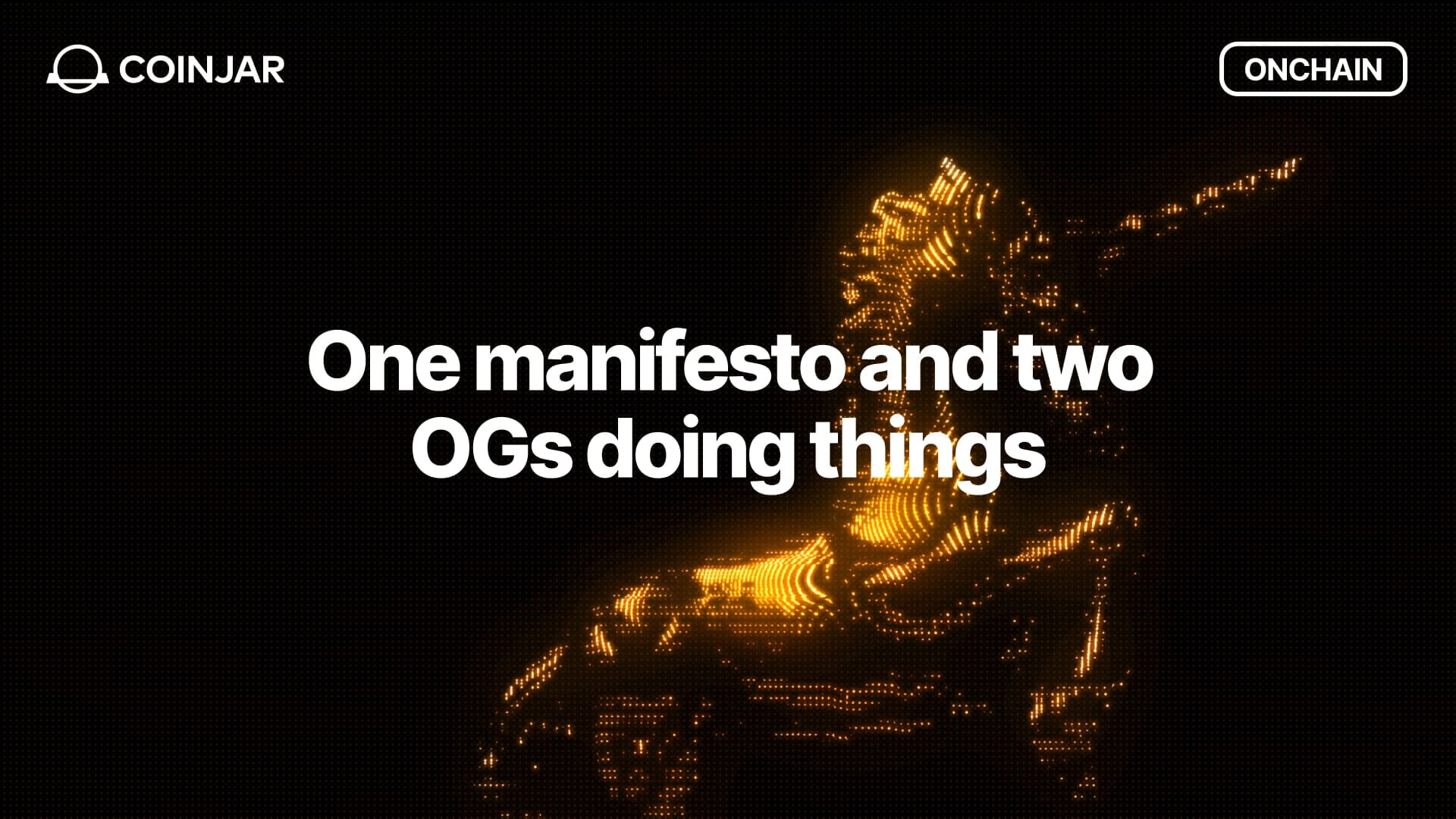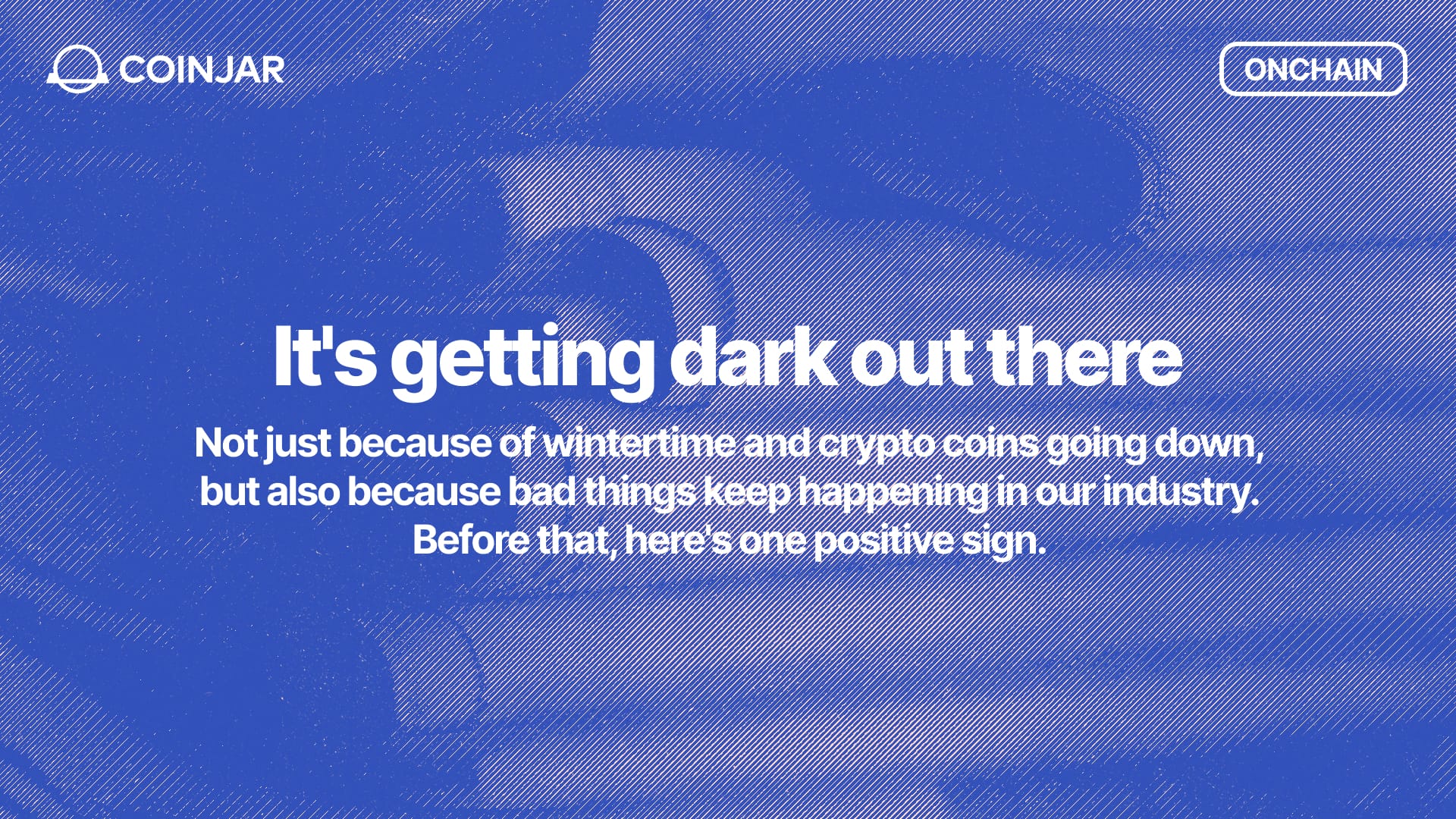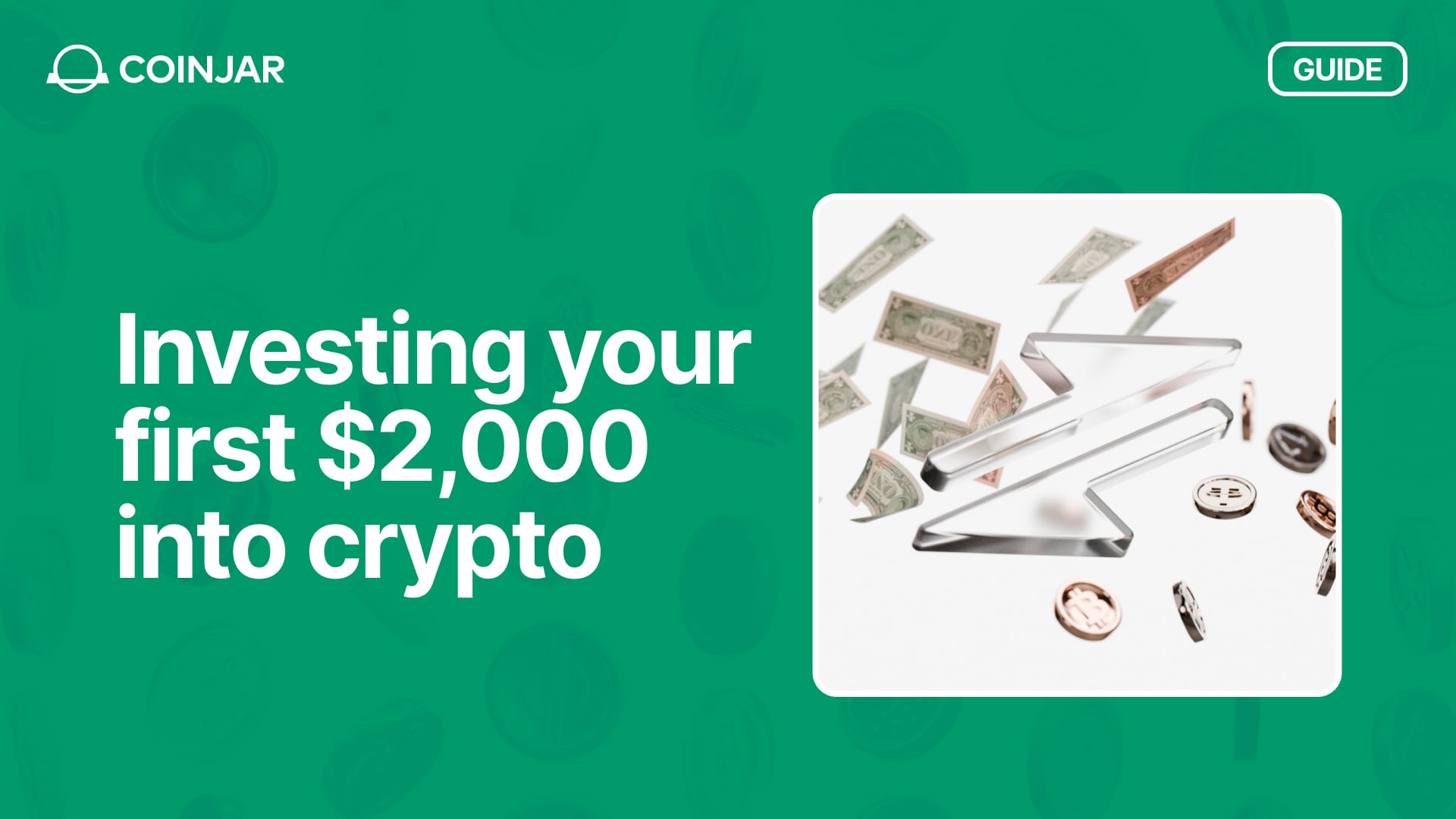Get $20 in free Bitcoin when you sign up and buy $50+ in crypto before November 30, 2025. Terms apply.
Bitcoin Outperforms Gold over Ten Years: Here’s Why
October 9, 2025Code or gold: Why has Bitcoin outperformed gold over the past ten years, when gold was considered to be the ultimate safe harbor?
Share this:

Trying to decide between gold, or “digital gold”? In times of economic turbulence, investors are always on the hunt for assets that might weather the storm. Traditional safe-haven assets like gold have long been the go-to shield against inflation, geopolitical risk, and fiat currency instability.
But as the world digitizes, a new contender has emerged: cryptocurrency.
From gold to code, the evolution of how people think about assets is upon us. Is crypto increasingly seen as a hedge against inflation, geopolitical risk, and fiat instability? Can it help diversify wealth like gold traditionally has?
The Search for Safe-Harbor Reserves
In recent years, geopolitics has reignited the global race for hard assets. Across continents, central banks have been stockpiling gold.
This is diversification away from the dollar-based financial system, which now appears less risk-free than it once did.
Mounting U.S. debt, recurring debt-ceiling standoffs, and the weaponization of the dollar through sanctions have pushed many countries to hedge against dollar dominance.
Gold, viewed as neutral and apolitical, has become the preferred insurance policy in a world where financial alliances are shifting and trust in fiat promises is thinning.
The rush to gold isn’t totally ideal, however. Storing and transporting gold across borders is costly, slow, and still relies on centralized custodians. Gold is hard to use as everyday money, and difficult to divide into micro-units.
Here lies a unique opening for the United States. By embracing Bitcoin as a reserve asset, America could leapfrog the gold-accumulating nations and redefine what “sound money” means in the digital age. Bitcoin is a transportable form of digital gold. Does Bitcoin offer the geopolitical edge gold never could?
The Timeless Appeal of Traditional Safe-Haven Assets
Safe-haven assets are investments that will probably hold or gain value during uncertainty. Gold, the undisputed king, has served this role for millennia.
Historically, gold prices surge when trust in fiat currencies wanes. During the 2008 financial crisis, gold climbed as stocks plummeted. Fast-forward to 2022's inflation spike, and gold hit record highs above $2,000 per ounce, offering a good annual return amid double-digit inflation rates.
Enter the digital revolution. Cryptocurrencies like Bitcoin are challenging gold’s throne with superior portability and accessibility.
Crypto: From Experiment to Global Hedge
Bitcoin's whitepaper in 2008 wasn't just code. It was a manifesto against centralized finance. Born from the ashes of the global financial meltdown, crypto promised decentralization, transparency, and immunity from government meddling.
By 08 October 2025, the crypto market cap had ballooned to over $4 trillion, with Bitcoin alone commanding a $2.4 trillion valuation.
What sparked this evolution? Institutional adoption. Giants like BlackRock and Fidelity now offer spot Bitcoin ETFs. This means that these big companies must buy the cryptos and hold them in order to offer the product. In Q1 2025, Bitcoin ETF inflows hit $15 billion, which was possibly a signal of mainstream trust. This isn't speculation. It's a paradigm shift where code looks like it is replacing bullion as the ultimate safe-haven asset.
Crypto as a Hedge Against Inflation and Currency Debasement
Inflation erodes purchasing power, and money can buy less and less. Central banks' endless money printing (like the U.S. Federal Reserve's $9 trillion balance sheet expansion post-2020) fuels this fire.
Gold can still hold value through this, because it is scarce. But crypto like Bitcoin also offers built-in scarcity. That is, no one can print more Bitcoin, there will only ever be 21 million BTC. Like gold, Bitcoin has a scarcity factor.Bitcoin set the scarcity standard in crypto. Other crypto like Litecoin, ADA, XRP, Aave and Yearn adopted variations, some pre-mined, some burned, some staked, but all with a ceiling. However Bitcoin is known as the ‘gold standard’ of crypto.
Gold vs Bitcoin
In 2025, gold has been the better performer when compared to Bitcoin. Gold has had a good year. However, over the longer horizon (the past 10 years), Bitcoin still dwarfs gold’s returns. Bitcoin is up thousands of percent versus gold’s steady doubling. So if you zoom in on this year alone, gold is ahead. If you zoom out, Bitcoin still holds the crown for overall performance since inception.
Of course this doesn’t mean that Bitcoin and gold will keep going up forever. Both could crash down to zero, and crypto is especially volatile. But if an investor is interested in hedging against inflation and currency debasement, and diversifying their portfolio, then… why not both?

Some analysts are saying that investors hedging against inflation could perhaps allocate 5-10% of portfolios to crypto, blending it with gold for diversified protection.
Of course, not everyone is a fan of Bitcoin, with some experts like Nobel-Prize winning economist Paul Krugman saying that it is a speculative bubble rather than a sustainable financial innovation.
No one investment is ever guaranteed to keep going up, however. So it is all a risk in some way, which is why many people like to diversify their investments.
Why has Bitcoin Outperformed Gold Over Ten Years?
While Bitcoin may be speculative for some, it can be a necessity for others. Crypto's borderless nature lets investors escape hyperinflation in places like Argentina (over 200% inflation in 2023) or Turkey with its 33.3% inflation. Venezuelans converted bolívars to BTC amid 1,700% hyperinflation. In Nigeria, where the Naira has lost 70% value since 2023, crypto trading volumes surged. Bitcoin's "store of value" narrative shines here, where it was used alongside stablecoins to preserve value in an unstable financial situation.
Investors in these places may have opted to park funds in cryptocurrencies rather than watch their savings in fiat currencies do a downward spiral.
That said, overall adoption is still rising long-term: While adoption slowed during the 2022–2023 bear market, it has since rebounded strongly.
Countries in South and Southeast Asia, Sub-Saharan Africa, and Latin America continue to dominate the top ranks of growing markets. This suggests crypto is being used for remittances, savings, and payments, not just speculation.
Crypto remittances cost 1%. But costs are around 6% for traditional wires. Anyone can see why people are leaving legacy systems behind.
Individual investors (retail buyers) are still involved too. Even when institutional flows slowed, small-scale transactions (under US$10,000) remained steady, showing that everyday users are sticking with crypto.
The 2025 Chainalysis index emphasises that adoption is not only recovering but spreading more evenly across regions, with both developed and developing economies showing growth.
This doesn’t mean that crypto adoption will forever be on an upward trajectory. No one knows what will happen from this point forward. People could abandon crypto for whatever reason and invest in something else. But for now, it seems like both individuals and institutions are open to Bitcoin as a store of value.
The Future: A Hybrid Portfolio of Gold and Code?
Fiat currencies, backed by government decree, are crumbling under debt mountains. The U.S. national debt hit $37 trillion in 2025, sparking de-dollarisation talks. BRICS nations are stockpiling gold, but crypto offers a neutral alternative unbound by any flag.
The evolution from gold to code doesn't mean ditching the old guard. A balanced strategy going into 2026 might include both crypto and gold, among other investments.
While there's no guarantee that any asset will be a safe bet, it does seem like a lot more people in the world are open to crypto, especially in unpredictable environments.
The above article is not to be read as investment, legal or tax advice and takes no account of particular personal or market circumstances; all readers should seek independent investment, legal and tax advice before investing in cryptocurrencies. This article is provided for general information and educational purposes only. No responsibility or liability is accepted for any errors of fact or omission expressed therein. CoinJar, Inc. makes no representation or warranty of any kind, express or implied, regarding the accuracy, validity, reliability, availability, or completeness of any such information. Past performance is not a reliable indicator of future results.
Share this:
On/Offchain
Your weekly dose of crypto news & opinion.
Join more than 150,000 subscribers to CoinJar's crypto newsletter.
Your information is handled in accordance with CoinJar’s Privacy Policy.
More from CoinJar Blog

Onchain: One manifesto and two OGs doing things
November 19, 2025Story One Wake up babe, new manifesto dropped Why ship app, when you can write manifestos instead, amirite? Or so the Ethereum Foundation & Co. must have thought as they sat...Read more
Onchain: It's getting dark out there
November 5, 2025Not just because of wintertime and crypto coins going down, but also because bad things keep happening in our industry. Before that, here's one positive sign. Story One x402...Read more
$2,000 to Invest? Check Out This Sample Crypto Portfolio
October 23, 2025So you've done your dry run buying 20 bucks worth of Bitcoin. Now that you trust the process, what are some ideas for your next move?Read moreYour information is handled in accordance with CoinJar’s Privacy Policy.
Copyright © 2025 CoinJar, Inc. All rights reserved.
CoinJar, Inc. is a registered Money Services Business with FinCEN and licensed as a money transmitter, NMLS #2492913. For a list of states in which CoinJar, Inc. is licensed or authorized to operate, please visit here. In certain other states, money transmission services are provided by Cross River Bank, Member FDIC.
This site is protected by reCAPTCHA and the Google Privacy Policy and Terms of Service apply.